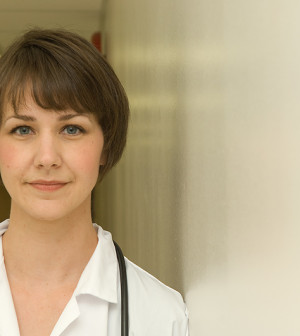- Skip Storing This Everyday Product in the Fridge Door
- Green Tea + B3 Pairing May Boost Brain Health
- Navigating Your Midlife Crisis: Embracing New Possibilities
- City Raccoons Showing Signs of Domestication
- Mapping the Exposome: Science Broadens Focus to Environmental Disease Triggers
- One Week Less on Social Media Linked to Better Mental Health
- Your Brain Changes in Stages as You Age, Study Finds
- Some Suicide Victims Show No Typical Warning Signs, Study Finds
- ByHeart Formula Faces Lawsuits After Babies Sickened With Botulism
- Switch to Vegan Diet Could Cut Your Greenhouse Gas Emissions in Half
Removing Healthy Breast of Little Benefit to Breast Cancer Patients: Study


For most women with breast cancer, there doesn’t seem to be a significant survival benefit from having their healthy breast removed as well, new research suggests.
In recent years, more women with cancer in one breast have been choosing to have the other breast removed as a precaution — known as a prophylactic or preventive mastectomy. But this new study finds that over 20 years, the survival benefit between women who’ve had a preventive mastectomy and those who kept their healthy breast was less than 1 percent.
“We found fairly convincing evidence that there really is no meaningful long-term survival benefit for the vast majority of women with breast cancer by having their opposite breast removed,” said study researcher Dr. Todd Tuttle. He is chief of surgical oncology at the University of Minnesota School of Medicine.
“Most patients have very minimal increases in life expectancy, one to seven months,” Tuttle said. And that difference was spread over two or more decades, especially in the younger women, he said.
Younger women with stage I, estrogen receptor-negative breast cancer (the type not fueled by estrogen) had the greatest survival benefits from the procedure. But, the survival difference between those who had the surgery and those who didn’t was still less than 1 percent over 20 years, according to the study.
It’s important to note that none of the women in this study had the so-called breast cancer genes known as BRCA-1 and BRCA-2. These genes significantly increase a woman’s risk of breast and ovarian cancer, according to the U.S. National Cancer Institute. And, because of their increased risk, preventive surgeries to remove the breasts and the ovaries are often offered to these women.
The new study is published July 16 in JNCI: Journal of the National Cancer Institute.
Tuttle’s team tracked survival over 20 years for more than 100,000 women with stage I or stage II breast cancers. The researchers then used a model to simulate survival results in women who had prophylactic mastectomy and those who did not.
The researchers didn’t look at other considerations, such as quality of life, surgical complications, or fear driving the decision to have a preventive mastectomy.
Recent research has found that unfounded fears prompt some women to have their healthy breast removed. In one study of women age 40 and under with breast cancer who chose preventive mastectomy, 94 percent said they wanted to boost survival, even though only 18 percent thought the procedure would actually do that.
From his practice, Tuttle said, he knows many women asking for preventive mastectomy do so out of fear. Many who opt for the procedure tell Tuttle: “I am going to have my other breast removed for peace of mind.” He tells them: “It’s really a false sense of security.”
He tells women who have had breast cancer in one breast that, yes, they are at increased risk of developing cancer in the opposite breast. But the chances of developing cancer in the opposite breast is about 4 or 5 percent over the next 10 years, Tuttle said, citing studies in the medical literature.
However, he said, overall survival depends on “whether the original cancer spread, not whether you get a new one.”
Dr. Stephen G. Pauker, professor of medicine and psychiatry at Tufts Medical Center in Boston, wrote an accompanying editorial in the same issue of the journal. He noted that the survival “differences are small” between the two groups of women.
More information
To learn more about preventive mastectomy, visit Mayo Clinic.
Source: HealthDay
Copyright © 2025 HealthDay. All rights reserved.










